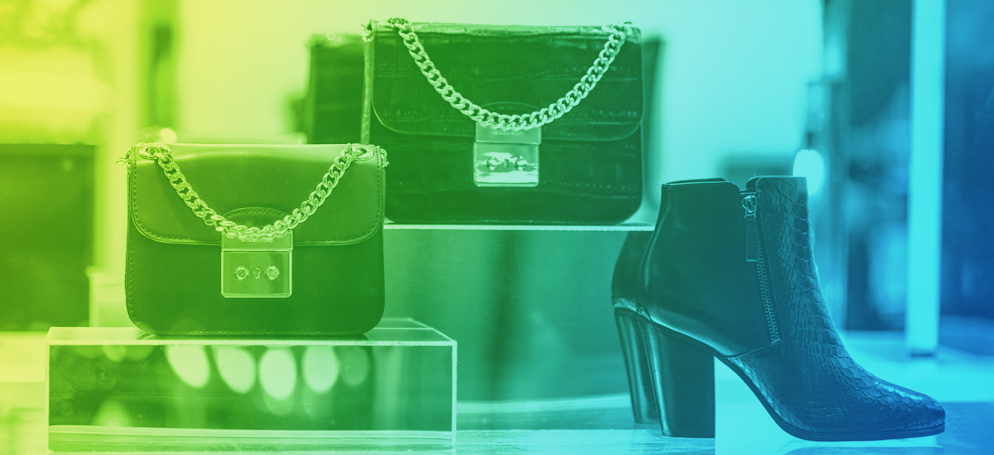
Life after Covid-19: The future of luxury retail
Coronavirus achieved what the Second World War failed to do: the closure (albeit temporary) of Harrods of London, the largest luxury store in the world. As a symbol of the pandemic’s impact on the luxury market, it was a powerful one.
Geographically, the crisis hit the sector hard: it started in China, a country whose citizens accounted for 90% of industry growth in 2019, and quickly spread to Italy where many luxury brands are headquartered or have key suppliers.
In 2019, the global market for personal luxury goods was worth about $310 billion, compared to $128 billion in 2000. Now, analysts predict the sector to contract by about 35% in 2020. Immediate headwinds include:
- Falling GDP and employment – inhibiting consumer spending power
- Volatile financial markets – undermining consumer confidence
- Travel restrictions – reducing the number of tourists who are a key driver of luxury spending
However, beyond the current turmoil, the broader outlook for the luxury sector remains positive, with three key trends defining the future:
- An accelerating shift to ecommerce
- The increasing importance of China
- Greater emphasis on sustainability
An accelerating shift to ecommerce
The luxury market has been slow to embrace ecommerce, partly because of a lingering consumer reluctance to buy expensive purchases online. The in-person experience of the purchase can be as valued as the purchase itself. As a result, luxury brands have invested heavily in the in-store experience – but how will high-touch, highly personalised in-store experiences work in an era of social distancing?
Social distancing renders digital channels more important than ever. In a survey conducted in March by Vogue Business in China, consumers said the channel they were most likely to use to buy luxury goods post-lockdown was ecommerce portals.
Before the pandemic, Bain & Company predicted that by 2025, ecommerce would make up 25% of luxury retail market value compared with 10% in 2019. The crisis is likely to accelerate this shift. Eventually, customers will return to physical stores, but the digital shopping habits formed during the outbreak will endure. The wider digitisation of customer journeys is here to stay as digital content creation becomes the main way in which consumers interact with brands.
The luxury brands which emerge most strongly from this crisis will be those who use the time to scale up their digital efforts. This requires a shift in mindset: rather than asking what benefits online channels can bring to the offline world, companies should ask how their bricks and mortar presence can support ecommerce sales.
Luxury consumers are accustomed to a high standard of service in stores and a key challenge for retailers will be how to replicate those highly personalised experiences online. One way to do this might be to give customers the option to make online appointments with a human behind the brand. For example, WeChat offers features that allow store assistants to message consumers and help them to complete purchases.
We can expect luxury brands to make even more effort to engage with customers virtually, through:
- Direct emails
- Live chats
- Virtual fashion shows
- Tutorials
- Product launches hosted on Instagram, Facebook and other social media platforms
Given the shift to ecommerce, luxury brands should:
- Accelerate digital investment and shift media spending to online channels – e.g. from outdoor to mobile – with a focus on customer activation rather than brand building
- Ensure websites are fully optimised and sensitively localised for each market
- Consider partnerships with reputable e-retailers
- Identify customer preferences by gathering and analysing data on purchase habits and shipping needs
- Step up digital personalisation efforts
- Ensure great customer service across channels – including social media, phone and live chat
- Simplify the returns process by ensuring robust package delivery tracking and pre-arranged return shipping labels
Increasing importance of China
Chinese shoppers are crucial to the luxury sector, since they:
- Are the world’s biggest luxury buyers both inside and outside their own country
- Represent 35% of the global personal luxury goods market
- Drove 90% of sector growth in 2019, and more than half of global luxury growth between 2012 and 2018
(Source: McKinsey)
The US and Europe have been more affected by the pandemic than China and are predicted to take longer to recover economically. So we could see Chinese consumers become proportionally more important to the sector in the future. Based on current trends, it’s possible that Chinese consumers could make up over half of luxury purchases by 2025.
A key driver of Chinese luxury consumption has been tourism. In 2019, Chinese consumers took more than 150 million trips abroad, with McKinsey estimating that purchases outside the mainland accounted for more than half of China’s luxury spend that year.
With hardening borders, that spend is now happening to some extent domestically, as Chinese consumers have no choice but to shop at home. Travel restrictions mean that purchases that would have been made abroad will now happen in China.
For example, WWD reported that Hermès broke a record with $2.7 million in sales at its second-largest flagship store in Guangzhou the day the store reopened after lockdown. LVMH reported a 50% rise in sales of its top brands in mainland China during April.
China’s government has cut taxes on luxury goods as part of an effort to domesticate more luxury spend. We can expect to see brands with a Chinese presence expand aggressively. Emerging brands could consider partnering with established local platforms such as Alibaba, which has launched a luxury outlet online platform called Luxury Soho, to run alongside its Tmall Luxury Pavilion flagship site. This platform will focus on deals and older collections to help labels shift unsold inventory.
To reactivate Asian luxury consumers in their home countries, brands should:
- Focus on creating localised experiences
- Strengthen digital and omnichannel offerings
- Engage more deeply with consumers in Tier 2 and 3 Chinese cities, not just Tier 1s
More emphasis on sustainability
In recent years, sustainability has been increasingly talked about within the luxury market, and that trend is set to continue.
McKinsey reports that, after large-scale crises with a heavy emotional toll, consumer preferences tend to shift, at least for a time, toward “silent” luxury. That is, there tends to be a consumer preference for investment pieces – minimalist, last-forever items – that feel more responsible given the state of the world. Considerations like craftsmanship and heritage become more important, conspicuous consumption less so.
As a result, we could see luxury consumers adopt the “fewer, better things” mantra that environmentalists have been promoting for the past decade. We may see consumers value ethics as much as aesthetics as they prioritise purposeful brands. Brands which can tell a powerful story – about provenance of materials, their environmental impact, the integrity of the supply chain and how workers are treated – will be well placed to capitalise.
Once fears around contracting the virus subside, we could see increased activity in the second-hand and rental channels. Alternative business models based on upcycling and recycling may see a boost from high levels of surplus stock in the system. A key sustainability challenge for the fashion sector will be how to get rid of large amounts of unsold 2020 inventory given sales are down – without resorting to steep discounts which affect brand equity. With over-production running 30 to 40% each season, more than 70% of clothes end up in a landfill already (source: The Business of Fashion).
Oban can help
Past crises tell us that luxury tends to suffer less than other sectors and often rebounds quicker. Amid all the uncertainty, the sector has reasons to feel confident about the future.
Now is the time to audit your brand, by addressing any gaps, strengthening brand equity and bringing your brand story to life. For some industries, the crisis offers scope for innovation, acceleration and competitive gain. To find out how Oban can help, please get in touch.

Charlotte Deacon | Client Partner
Oban International is the digital marketing agency specialising in international expansion. Our LIME (Local In-Market Expert) Network provides up to date cultural input and insights from over 80 markets around the world, helping clients realise the best marketing opportunities and avoid the costliest mistakes.